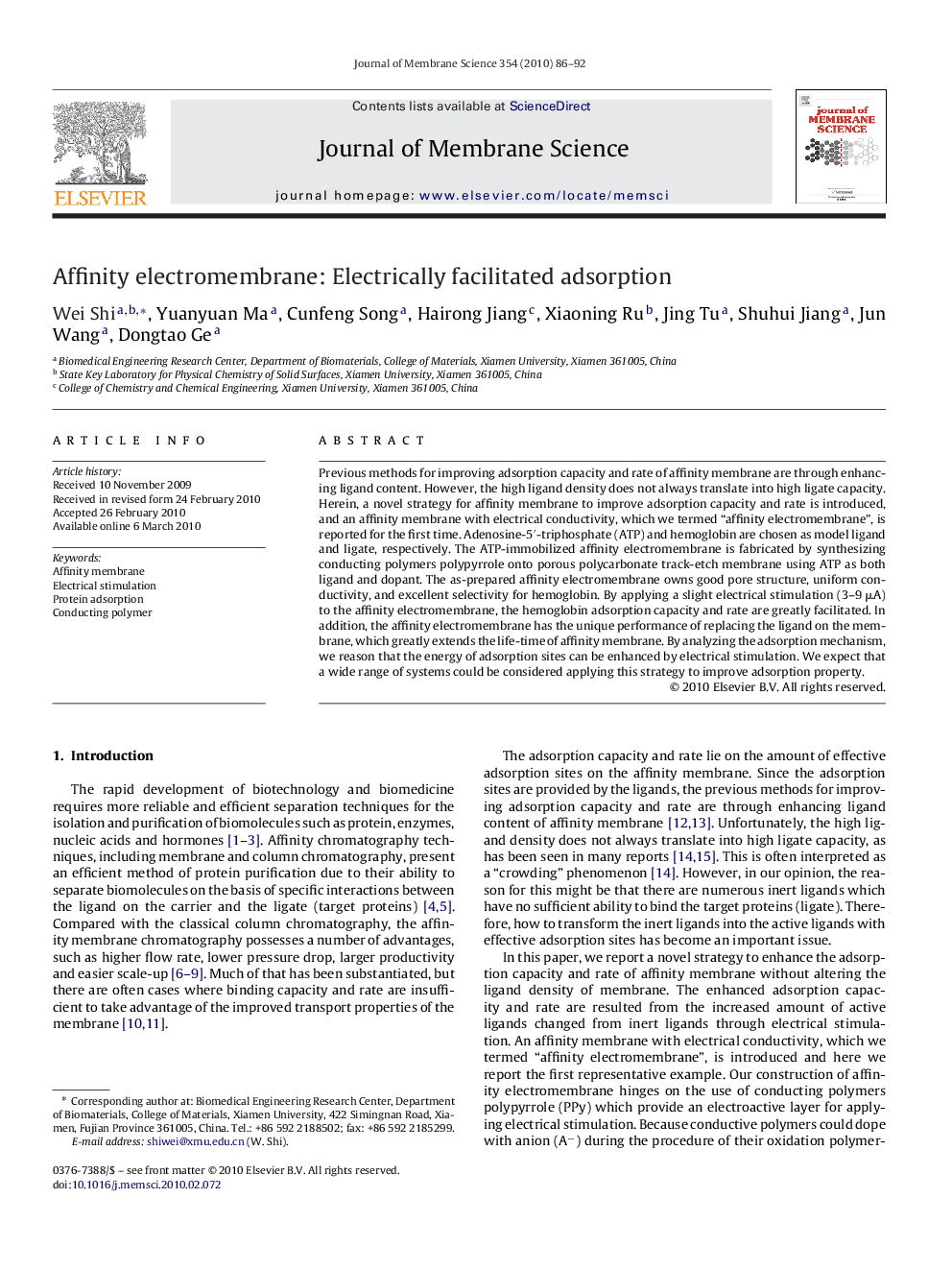| Article ID | Journal | Published Year | Pages | File Type |
|---|---|---|---|---|
| 636320 | Journal of Membrane Science | 2010 | 7 Pages |
Abstract
Previous methods for improving adsorption capacity and rate of affinity membrane are through enhancing ligand content. However, the high ligand density does not always translate into high ligate capacity. Herein, a novel strategy for affinity membrane to improve adsorption capacity and rate is introduced, and an affinity membrane with electrical conductivity, which we termed “affinity electromembrane”, is reported for the first time. Adenosine-5â²-triphosphate (ATP) and hemoglobin are chosen as model ligand and ligate, respectively. The ATP-immobilized affinity electromembrane is fabricated by synthesizing conducting polymers polypyrrole onto porous polycarbonate track-etch membrane using ATP as both ligand and dopant. The as-prepared affinity electromembrane owns good pore structure, uniform conductivity, and excellent selectivity for hemoglobin. By applying a slight electrical stimulation (3-9 μA) to the affinity electromembrane, the hemoglobin adsorption capacity and rate are greatly facilitated. In addition, the affinity electromembrane has the unique performance of replacing the ligand on the membrane, which greatly extends the life-time of affinity membrane. By analyzing the adsorption mechanism, we reason that the energy of adsorption sites can be enhanced by electrical stimulation. We expect that a wide range of systems could be considered applying this strategy to improve adsorption property.
Related Topics
Physical Sciences and Engineering
Chemical Engineering
Filtration and Separation
Authors
Wei Shi, Yuanyuan Ma, Cunfeng Song, Hairong Jiang, Xiaoning Ru, Jing Tu, Shuhui Jiang, Jun Wang, Dongtao Ge,
